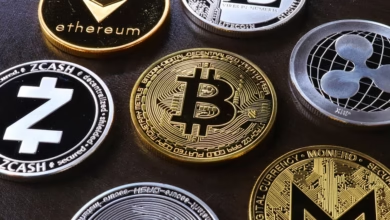Navigating the World of Physical Gold: A Comprehensive Guide to Buying, Storing, and Investing in Gold Bars, Coins, and Jewelry

In an ever-evolving financial landscape, the allure of physical gold remains steadfast, drawing both seasoned investors and newcomers alike. As a time-honored safe haven asset, gold has not only withstood the test of time but has also adapted to modern economic challenges, including inflation and market volatility. This article delves into the multifaceted world of physical gold, exploring various types such as gold bars, coins, and jewelry, alongside their benefits and investment strategies.
We will guide you through the process of buying and storing gold safely, ensuring that your investment is protected against potential risks like gold smuggling and market fluctuations. Additionally, we'll analyze current gold market trends, prices, and the implications of gold reserves held by central banks, shedding light on the future of gold as a sustainable investment. Whether you're interested in gold ETFs, gold futures, or luxury gold collectibles, this comprehensive guide will equip you with the knowledge to navigate the gold trade effectively. Let's embark on this journey into the glittering realm of physical gold and uncover how it can enhance your investment portfolio.
- 1. Understanding Physical Gold: Types, Benefits, and Investment Strategies
- 2. How to Buy and Store Gold: Coins, Bars, and Jewelry Safely
- 3. The Future of Gold: Market Trends, Prices, and the Role of Gold as a Safe Haven Asset
1. Understanding Physical Gold: Types, Benefits, and Investment Strategies
Investing in physical gold has long been a popular choice for those looking to diversify their portfolios and protect their wealth. Understanding the various types of physical gold, the benefits it offers, and effective investment strategies is crucial for anyone considering gold as an investment.
There are several types of physical gold available for investment, including gold bars, gold coins, and gold jewelry. Gold bars are typically produced by accredited refiners and come in various weights, making them a preferred choice for serious investors. Gold coins, such as the American Eagle or Canadian Maple Leaf, often carry a premium due to their collectible nature and can be an attractive option for both new and seasoned investors. Gold jewelry, while often considered a luxury item, can also serve as an investment, especially pieces made from high-karat gold.
One of the primary benefits of investing in physical gold is its status as a safe haven asset. Throughout history, gold has maintained its value, especially during times of economic uncertainty or inflation. In recent years, market trends have shown an increasing global demand for gold, driven by factors such as central banks accumulating gold reserves and concerns over currency fluctuations. This demand can lead to rising gold prices, making it a valuable addition to any investment strategy.
Investors can also explore various strategies when investing in physical gold. For instance, gold coins investing may appeal to those looking to collect while benefiting from potential appreciation. Additionally, understanding gold market analysis and trends can help investors make informed decisions about when to buy or sell their gold holdings.
In recent times, sustainable gold mining practices have gained traction as consumers become more conscious of the environmental and social impact of their investments. This trend is reflected in the growing interest in gold recycling and responsible sourcing, which can enhance the value of gold products.
Moreover, investors should consider the relationship between gold and other asset classes, such as cryptocurrencies. As digital assets gain popularity, some investors are exploring the balance between gold and cryptocurrency in their portfolios, particularly in the context of gold and inflation.
Ultimately, investing in physical gold requires careful consideration of the types of gold available, market dynamics, and investment strategies. By staying informed about gold production, refining processes, and the intricacies of the gold trade, investors can navigate the complexities of the gold market effectively. As global demand for gold continues to evolve, positioning oneself strategically in the gold market can yield substantial long-term benefits.
References:
– World Gold Council. (2023). Gold Demand Trends Q3 2023. Retrieved from [www.gold.org](https://www.gold.org)
– Reuters. (2023). Gold prices surge amid economic uncertainty. Retrieved from [www.reuters.com](https://www.reuters.com)
– CNBC. (2023). Why gold remains a strong investment choice. Retrieved from [www.cnbc.com](https://www.cnbc.com)
2. How to Buy and Store Gold: Coins, Bars, and Jewelry Safely
When considering investing in physical gold, whether it be in the form of coins, bars, or jewelry, it is essential to approach the buying and storing process with diligence and care. The physical gold market offers a variety of investment options that can serve as a safe haven asset, especially during times of economic uncertainty or inflation. Here’s how to buy and store gold safely.
First, it is crucial to purchase gold from reputable dealers. Research and choose vendors with solid reputations, positive customer reviews, and transparent pricing structures. Look for dealers who provide certificates of authenticity for their products, especially for gold coins and collectibles. This assurance helps protect you from potential gold smuggling or counterfeit issues that can arise in the gold trade.
When buying gold coins, bars, or jewelry, it’s important to stay informed about gold market trends and gold prices. Understanding these factors allows you to make educated decisions regarding your purchases. Additionally, consider the type of gold investment that best suits your financial goals. For example, gold bullion and coins are often favored for their liquidity and ease of storage, while luxury gold jewelry may be more personal and less practical for investment purposes.
Once you have acquired your physical gold, proper storage is vital to ensure its preservation and security. Here are some tips for safely storing your gold investments:
– **Home Safe:** Invest in a high-quality safe that is both fireproof and waterproof. This option provides convenient access while protecting your gold from theft and environmental damage.
– **Safety Deposit Box:** Consider renting a safety deposit box at a bank. This offers a high level of security and is an excellent choice for larger investments or valuable collectibles.
– **Insurance:** Insure your gold holdings to protect against theft or loss. Look for policies specifically designed for precious metals to ensure comprehensive coverage.
– **Inventory Management:** Keep a detailed inventory of your gold assets, including descriptions, purchase prices, and current market values. This will assist with insurance claims and future market analysis if you decide to sell.
As you navigate the gold market, be aware of the importance of sustainable gold mining practices. Supporting ethical sourcing and recycling initiatives can contribute to the reduction of environmental impact associated with gold production. Additionally, as gold prices fluctuate, staying informed about global gold demand and market analysis helps in making strategic decisions regarding when to buy or sell your physical gold.
Investing in gold, whether through physical means or gold ETFs, can provide a hedge against inflation and economic volatility. By adhering to these buying and storage guidelines, you can ensure that your gold investments remain secure and profitable in the long run.
3. The Future of Gold: Market Trends, Prices, and the Role of Gold as a Safe Haven Asset
The future of gold remains a topic of significant interest and speculation, particularly as market trends evolve in response to economic conditions and global demand. Historically, gold has been viewed as a safe haven asset, a reliable store of value during times of economic uncertainty, inflation, or geopolitical instability. The ongoing fluctuations in gold prices reflect these dynamics, as investors turn to physical gold, including gold bars, coins, and jewelry, to safeguard their wealth.
As central banks increase their gold reserves, the demand for gold is likely to remain robust. Recent market analysis indicates a growing trend among central banks to diversify their reserves, moving away from traditional fiat currencies and investing in gold bullion. This shift has been particularly pronounced in countries that are vulnerable to economic instability or fluctuating currency values.
Additionally, gold mining and production play a crucial role in shaping the gold market trends. Innovations in sustainable gold mining practices are becoming more prevalent, aligning with global efforts to address environmental concerns. As consumers and investors increasingly prioritize ethical sourcing, the demand for sustainably mined gold may drive future production strategies.
The rise of gold ETFs and gold futures has also transformed how investors approach gold investing. These financial instruments provide liquidity and ease of access to gold without the need for physical storage. However, the allure of tangible assets like gold coins and collectibles continues to attract investors looking for a more traditional approach to wealth preservation.
Furthermore, the relationship between gold and inflation remains a critical aspect of its investment appeal. As inflation rates rise, many investors turn to gold as a hedge against declining purchasing power. This trend is amplified by the growing interest in alternative assets, including cryptocurrency, which has led to discussions about gold's role in a diversified investment portfolio.
In conclusion, while the gold market is subject to fluctuations and external influences, its status as a safe haven asset is unlikely to diminish. With ongoing global gold demand and advancements in gold technology and refining processes, the future of gold investment appears promising. Investors considering physical gold, whether in the form of bars, coins, or jewelry, will find that understanding these market trends and dynamics is essential for making informed decisions in this ever-evolving landscape.
In conclusion, investing in physical gold—whether through gold bars, coins, or jewelry—offers a tangible asset that has stood the test of time as a safe haven asset. Understanding the various types of gold and their unique benefits is essential for any investor looking to diversify their portfolio amidst market uncertainties. The strategies for buying and securely storing gold are crucial in protecting your investment from risks such as gold smuggling or fluctuations in gold prices.
As we look to the future, staying informed about gold market trends and prices will be vital for making sound investment decisions. The evolving landscape of gold, including innovations in gold technology and sustainable gold mining practices, alongside the enduring popularity of gold collectibles and luxury gold items, indicates a robust demand that is likely to continue.
Moreover, as central banks increase their gold reserves and global gold demand remains strong, gold's role in the investment world—particularly in relation to gold ETFs, gold futures, and even the intersection of gold and cryptocurrency—will shape the future of this precious metal. By understanding the nuances of gold investment and the importance of gold refining and production, investors can better navigate the complexities of the gold market.
Ultimately, whether you are considering physical gold as a hedge against inflation or as part of a broader investment strategy, it is clear that the allure of gold remains as powerful as ever. Embrace this opportunity to secure your financial future with this timeless asset, and stay vigilant in your journey through the gold trade.





